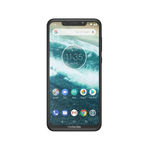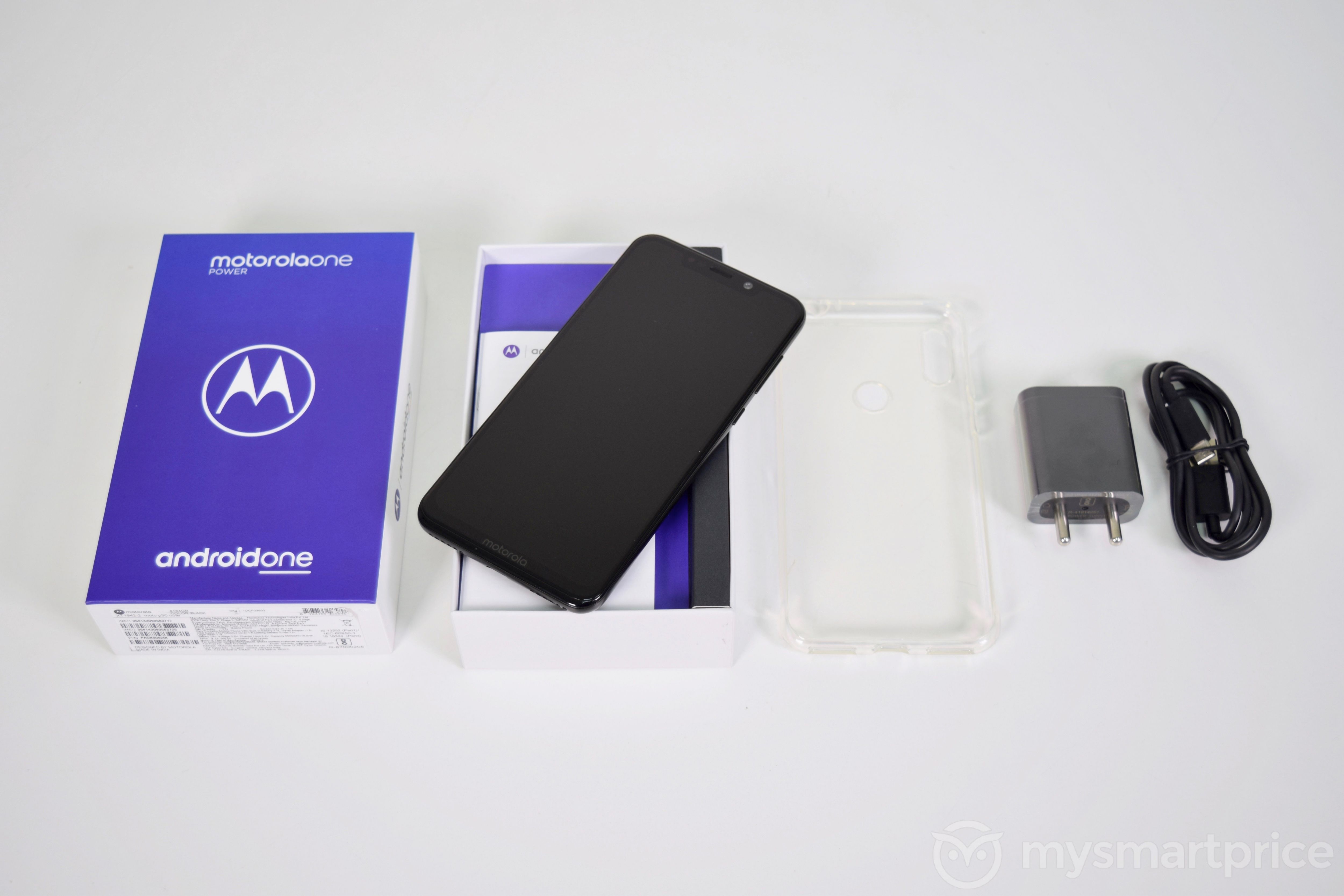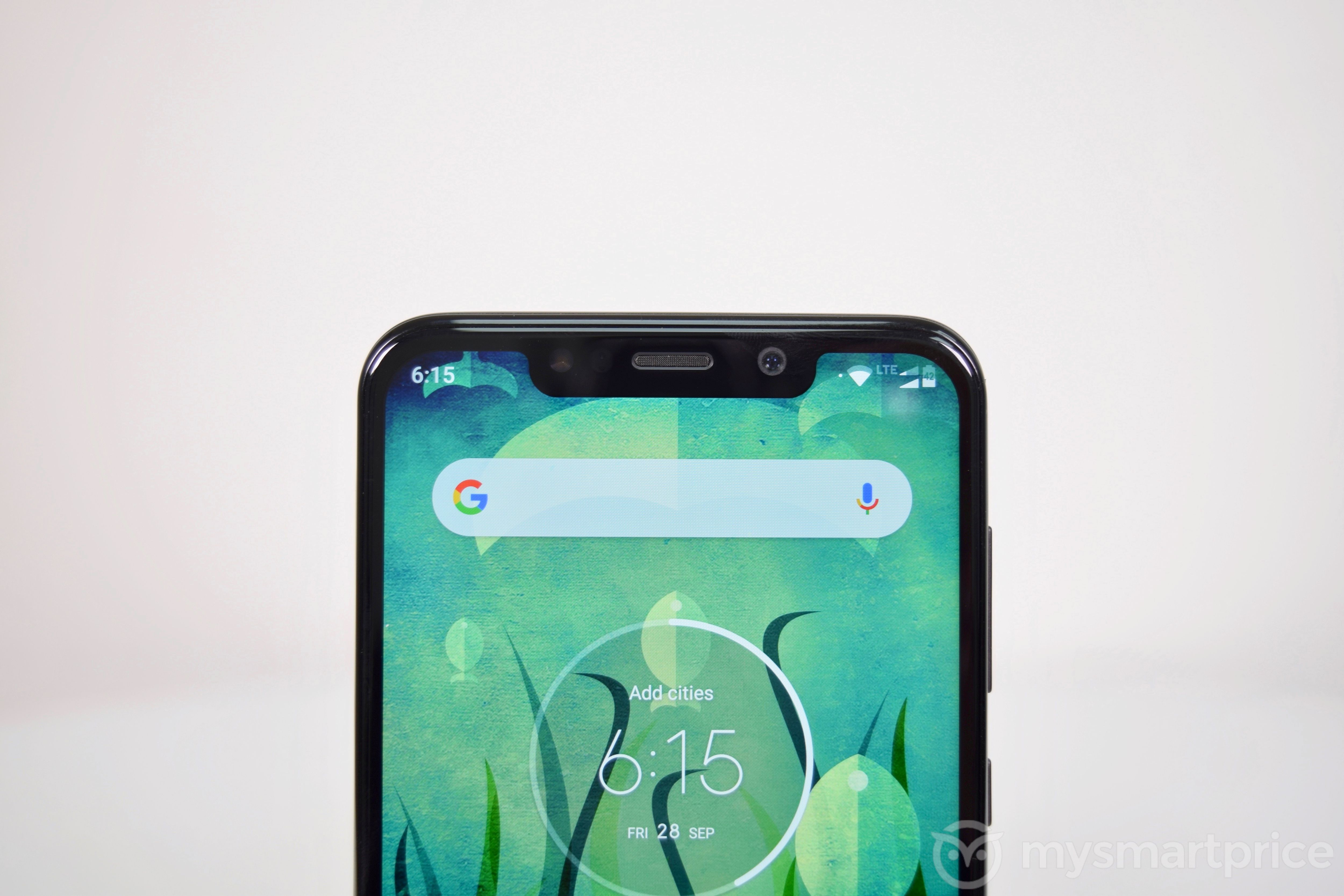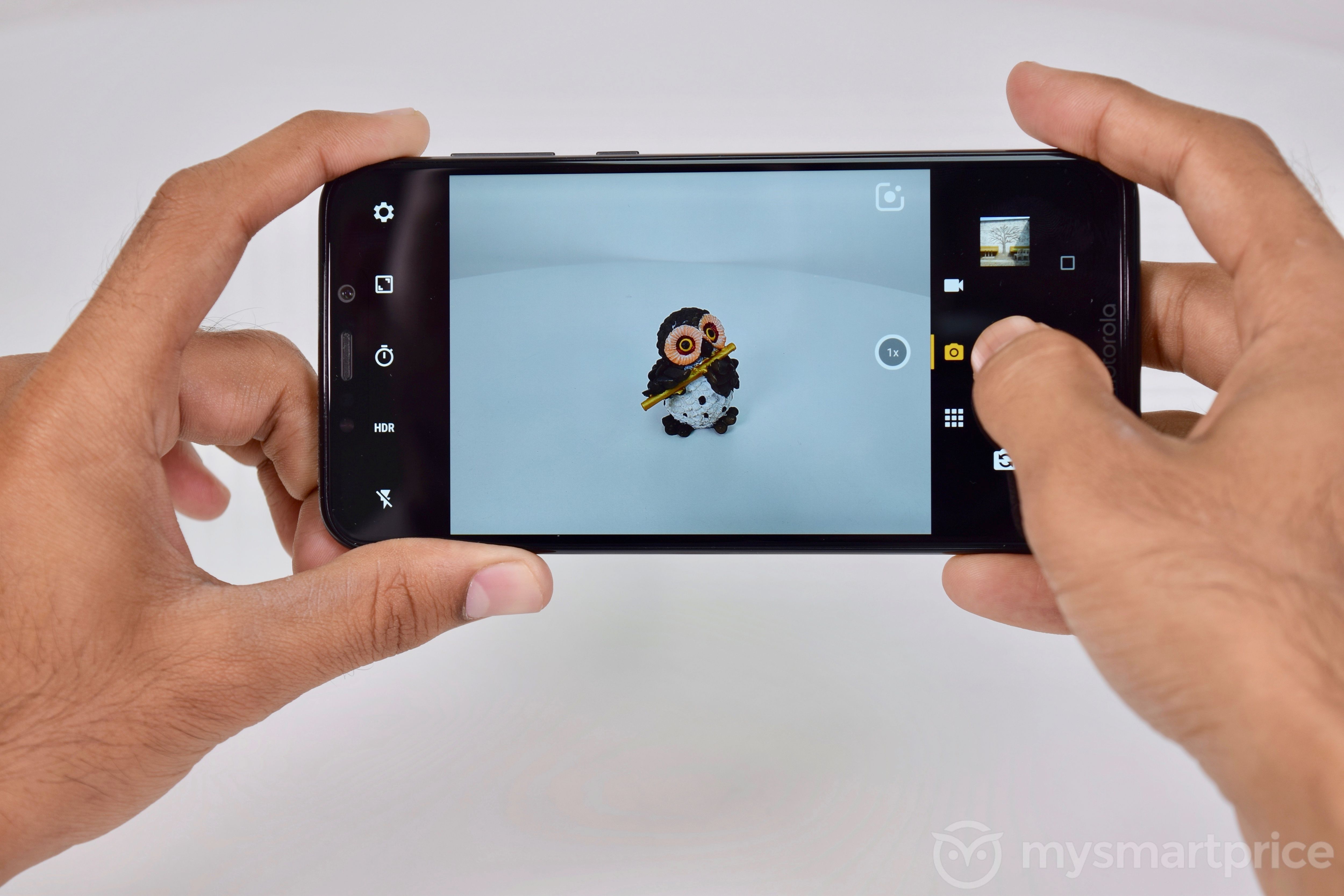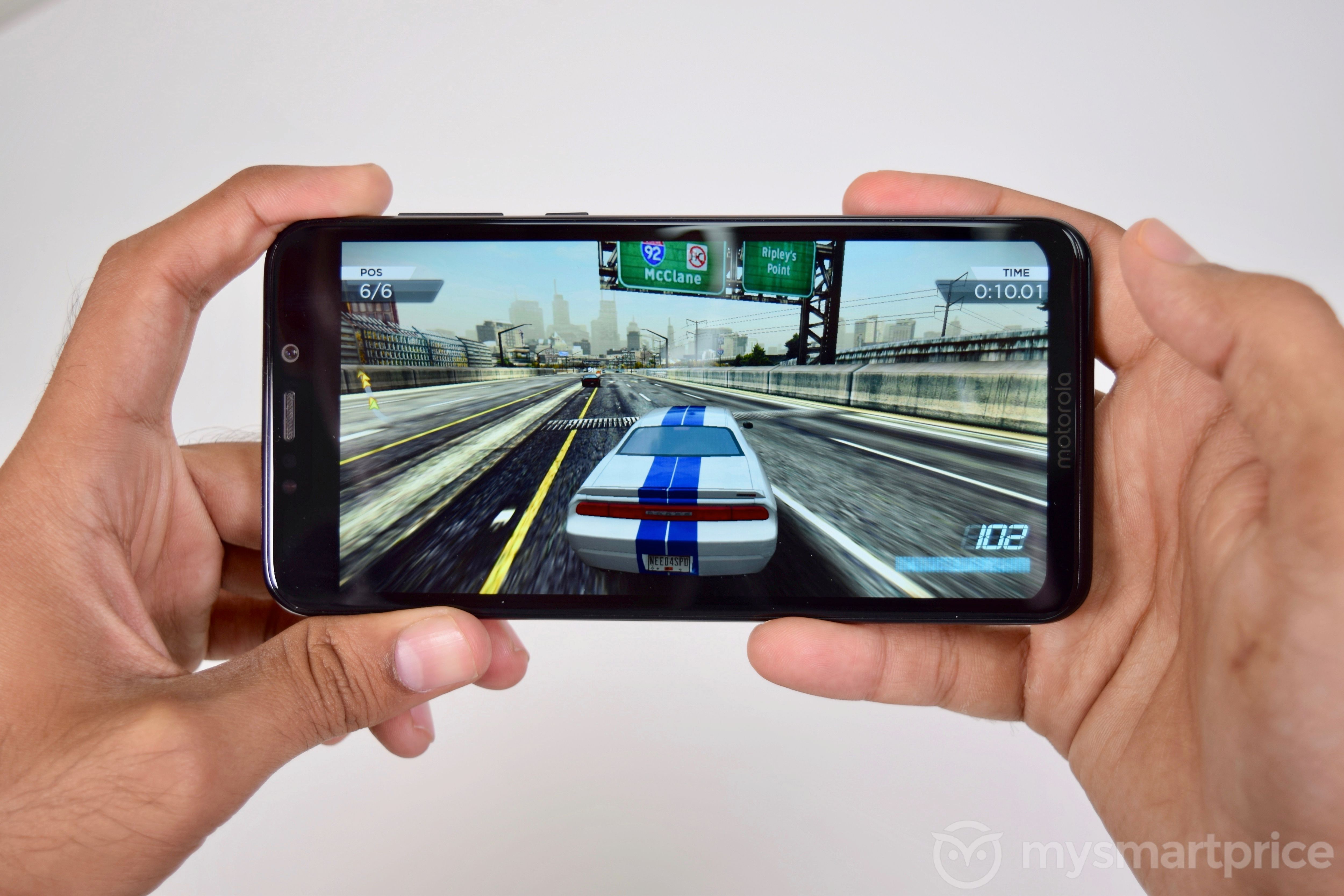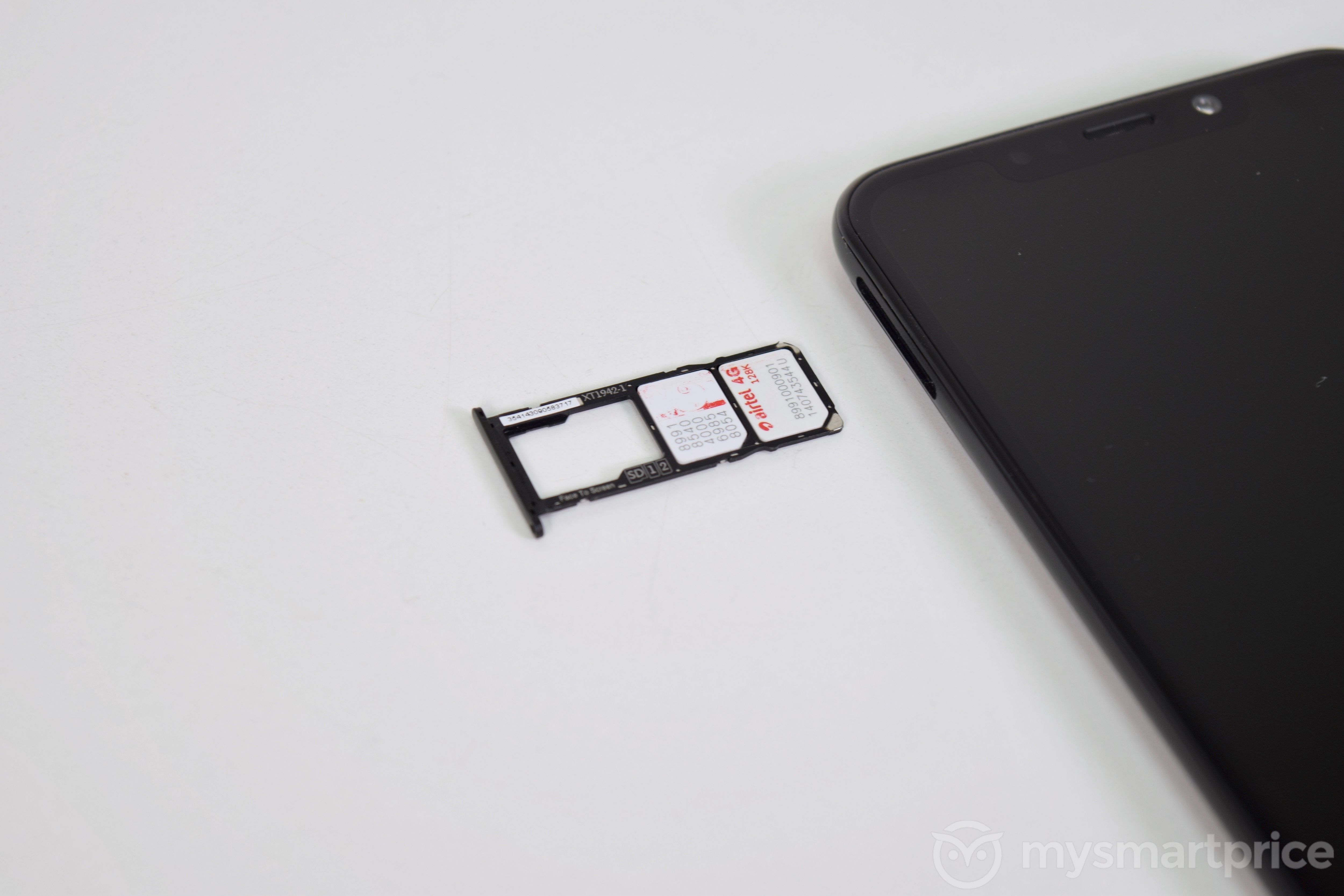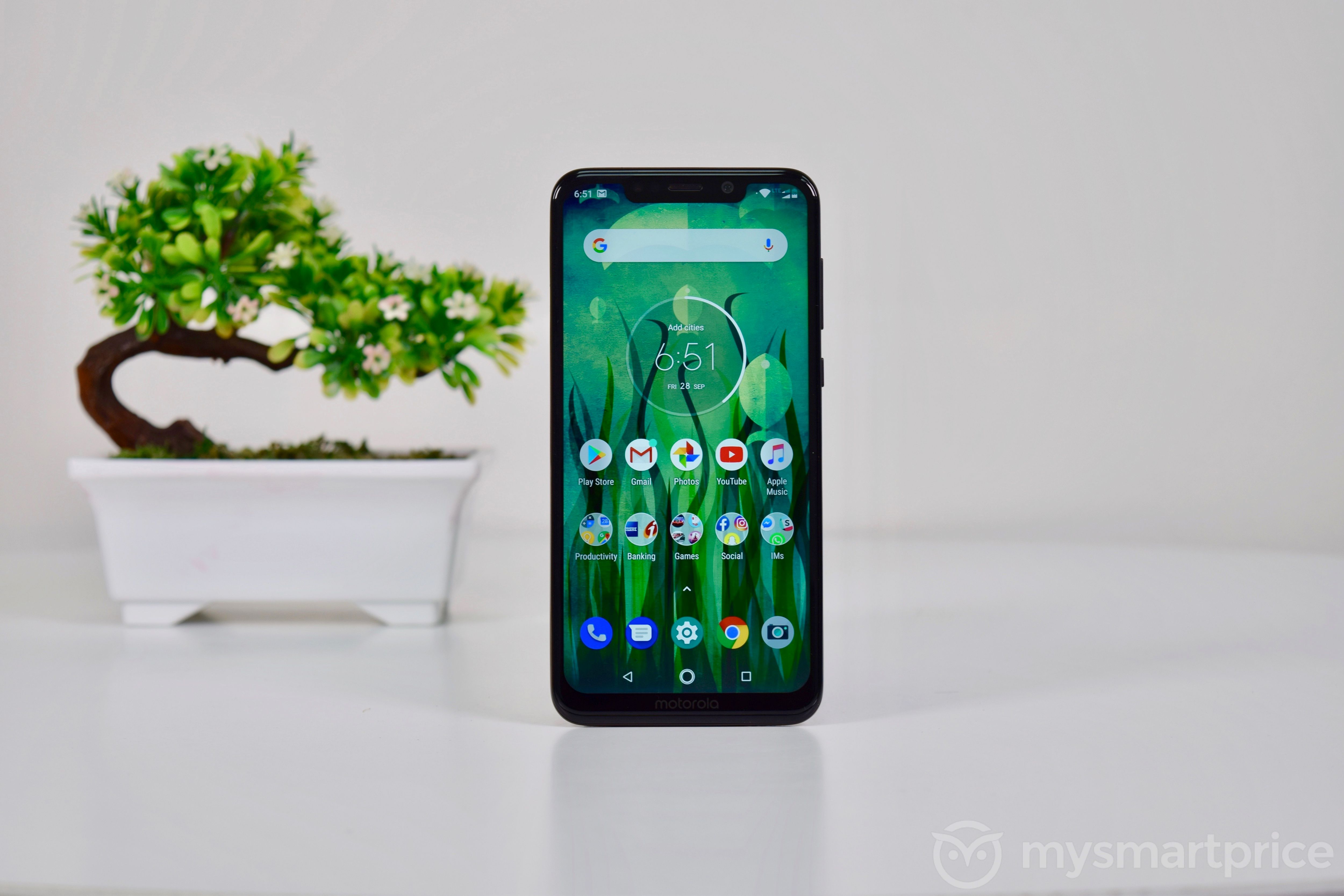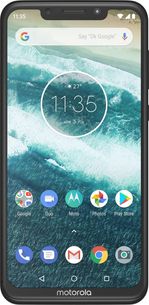
Motorola One Power
Rs. 14,999After a long time, Motorola has come up with a smartphone that has the potential to beat every other mid-range smartphone in the Indian market. The newly-launched Motorola One Power uses the most powerful chipset in its price range along with a massive battery. It employs a Snapdragon 636 chipset and a 5000mAh battery. It doesn’t skimp on latest trends either, offering a dual-camera setup and an edge-to-edge screen with a notch at the top.
The Motorola One Power also offers a few features that are missing from its competitors: Bluetooth 5.0, dual-band Wi-Fi ac, dedicated microSD card slot, USB Type-C port, and front-facing LED flash. If this doesn’t look like a phone with the best hardware at the price, consider this, the Motorola One Power is also an Android One device, which means it will (probably) receive Android version updates faster than any other smartphone in the price range.
With all these features, it looks like Motorola has not cut any corners, at least on paper, with the Motorola One Power. How does it perform in real life, though? Let us have a look.
[P_REVIEW post_id=117704 visual=’full’]
In the box
- Motorola One Power
- 15W fast charger
- USB Type-C cable
- Silicon protective case
Motorola One Power: About This Review
The review is based on my experience with the Motorola One Power for two weeks. The device was used with two SIM cards—Airtel (3G) & Jio (4G)—during the review period. Usually, my usage included a couple of hours of cellular data usage, while the rest of the time, the device was connected to 5GHz Wi-Fi. My everyday usage also included a couple of hours of music listening through my headphones. The brightness was set to automatic for most of the time. I did not use the microSD card. The phone was set up with three email accounts, a few social media apps, and IM apps.
Motorola One Power Review: Design & Build Quality
The Motorola One Power looks like most smartphones from 2018, all thanks to its edge-to-edge screen design and a notch at the top. Motorola chose a metal back instead of a glass one, which makes it look duller than glass back phones, but it also makes it stronger. A few other mid-range smartphones like the Nokia 6.1 Plus and the Honor 9N appear flashier but might also break easily in case you drop them.
The Motorola One Power is relatively thicker and heavier than most other phones due to its massive 5000mAh battery. That doesn’t mean it is too thick to handle. Its thickness works in its favor, offering a comfortable in-hand feel. The device, however, could have been lighter considering that the Asus Zenfone Max Pro M1, which packs the same 5000mAh battery, weighs less.
The power and volume buttons have ergonomic placement. They are also tactile and robust. The fingerprint scanner is easy to reach. My only complaint about the Motorola One Power’s design and ergonomics would be its large screen, which hinders one-handed usage. However, that is true for every other smartphone these days. Overall, I think the Motorola One Power has an excellent build quality and design for its price.
Motorola One Power Review: Display
The Motorola One Power features a large, 6.2-inch display, making it an excellent device for multimedia consumption. It also gives Motorola One Power an edge over its competitors in terms of screen real estate. As mentioned earlier, the relatively minimum bezel screen has a notch at the top. The notch is slightly wider than that in the other smartphones, but it isn’t a big issue.
While most other smartphones in the same price segment use an IPS LCD screen, the Motorola One Power uses an LTPS IPS LCD panel. LTPS displays usually have better quality but they are also costlier. What Motorola has proved once again is that it did not compromise on quality with the Motorola One Power. The display has a resolution of 2246 x 1080 pixels and is sharp enough to avoid visible pixelation.
Enough with the specs list, let’s talk about how it performs. The display has an excellent color reproduction. Not many smartphones at this price can reproduce colors as well as the Motorola One Power. While Black levels are not perfect, they’re good enough for the price. The white saturation point of the screen is also good.
There is, however, one major issue. The display can’t get bright enough. Although it can reproduce colors accurately, most people want their phones’ screens to be bright enough so that content can be viewed comfortably outdoors, and that’s not true with the Motorola One Power’s screen. It is not too bad either; you’ll be able to see the content on the screen but you’ll have to put in a bit of an effort. Some competing phones have brighter screens.
Motorola One Power Review: Camera
The Motorola One Power has a dual-camera on the back, similar to most mid-range smartphones these days. The dual-camera setup uses a 16MP sensor for capturing images and a 5MP sensor for measuring depth. The primary sensor features f/1.8 aperture and 1.12µm pixels. The secondary sensor uses f/2.2 aperture and 1.0µm pixels. The camera also features phase-detection autofocus and dual-tone, dual-LED flash.
The camera hardware looks great on paper, but the final image quality isn’t all that good. Daylight images are not bright enough, as you would expect from a smartphone of this price. The colors are muted as well, making images appear duller than they should. The dynamic range could have been better as well. Zooming in on the image reveals that details aren’t impressive either. Furthermore, the camera refuses to focus on the subject while capturing macro images, unless adjusted manually.
Coming to the low-light image quality, pictures continue to suffer from all the issues that I mentioned above. Additionally, there’s a lot of noise and lens flare. Due to these issues, low-light still images appear unimpressive. There is no panorama mode in the camera app, and that’s silly for a phone released in 2018.
I was expecting a lot from the Motorola One Power’s primary camera, but it didn’t deliver up to my expectations, be it in daylight or low light scenarios. Phones like the Xiaomi Redmi Note 5 Pro (review) offer significantly better image quality at the same price.
The Motorola One Power has a 12MP front-facing camera with f/2.0 aperture and an LED flash. Motorola had claimed during the launch event that the pixel size (1.25µm) is larger than the front-facing cameras of most other smartphones in the price segment. The company claimed that larger pixels help the camera in capturing more light, resulting in brighter images. The company’s claim stands true. Selfies captured in daylight as well as low-light conditions appear bright, have plenty of details, a vibrant color tone, and lower noise levels, making them look quite pleasing.
Motorola has also packed a bokeh mode for the front-facing camera, but it doesn’t work well. The edge detection is inaccurate, spoiling the bokeh effect. Other smartphones in the price do a much better job. To get an idea of how a well-processed bokeh effect selfie looks like, take a look at our Nokia 6.1 Plus review.
Leaving the bokeh mode aside, the Motorola One Power’s selfie camera does a brilliant job of taking bright, detailed, and vibrant selfies in most conditions.
Motorola One Power Review: Performance
At the heart of the Motorola One Power is the Qualcomm Snapdragon 636 SoC which is currently the most powerful SoC in the Rs. 15,000 price segment. It is the same SoC that is used in the Nokia 6.1 Plus, Asus Zenfone Max Pro M1, and the Xiaomi Redmi Note 5 Pro. Unlike most other smartphones out there, which come in various RAM and storage configurations, the Motorola One Power is being offered in only one variant: 4GB RAM + 64GB internal storage.
The Motorola One Power is an Android One smartphone, which should result in timely software patches and Android version updates. Being an Android One device, it has a clean, bloatware-free, stock Android UI. The device was launched with Android 8.1 Oreo OS and received the Android 9 Pie update at the end of November 2018. People who are keen on receiving timely Android updates, the Motorola One Power turns out to be an excellent choice.
Jumping to its performance, the Motorola One Power feels fast and smooth. There are no stutters or frame drops, even under heavy loads. The app-opening time is short, and there is almost no lag while switching between applications. UI animations are fluid and offer you a sense of satisfaction. Gaming on the device is very good, too, and the phone does not heat up at all.
The Motorola One Power is faster than any other smartphone under Rs.15,000. The main reason why other Snapdragon 636 equipped devices are not as fast the Motorola One Power is that their software is not as refined. The Motorola One Power simply exceeded my expectations, and I’m delighted with its performance.
Motorola One Power Review: Connectivity, Call Quality, & Audio
The Motorola One Power has a rich set of connectivity features. First of all, the device comes with a dual-SIM card slot and a dedicated microSD card slot. Therefore, you can now use two SIM cards a microSD card simultaneously. The smartphone has a USB Type-C port, which I think is a convenient feature. This feature is missing from both competitors, the Zenfone Max Pro M1 and the Redmi Note 5 Pro.
The smartphone also packs dual-band Wi-Fi ac/b/g/n, which allows for faster data transfer rates. The Motorola One Power’s direct rival, the Zenfone Max Pro M1 (review) misses out on this feature. Motorola could have skipped this feature to save money, and it would have gone unnoticed, but the brand did not do so. Proving once again that it did not cut any corners. There is also Bluetooth 5.0, which makes sure that you can take advantage of the new wireless audio devices in the market.
The call quality on the Motorola One Power is excellent. The earpiece is loud and clear, and the microphone does a pretty good job of picking up vocals clearly. The signal reception is also great, making sure that there are no call drops. The device supports 4G and VoLTE on both the SIM cards. However, only one SIM card can run on 4G at a time – this is something that the mid-range smartphones are yet to adopt.
The device has a single bottom firing loudspeaker with decent audio quality and loudness, similar to many other devices in the price range. There is also a 3.5mm audio jack on the top. I hooked up my Sennheiser Momentum to it and cranked up the volume to the highest level, but I felt that the volume level was inadequate. Music lovers, you have been warned. I think this is something that a software update might be able to fix, but I’m not sure.
Motorola One Power Review: Battery Life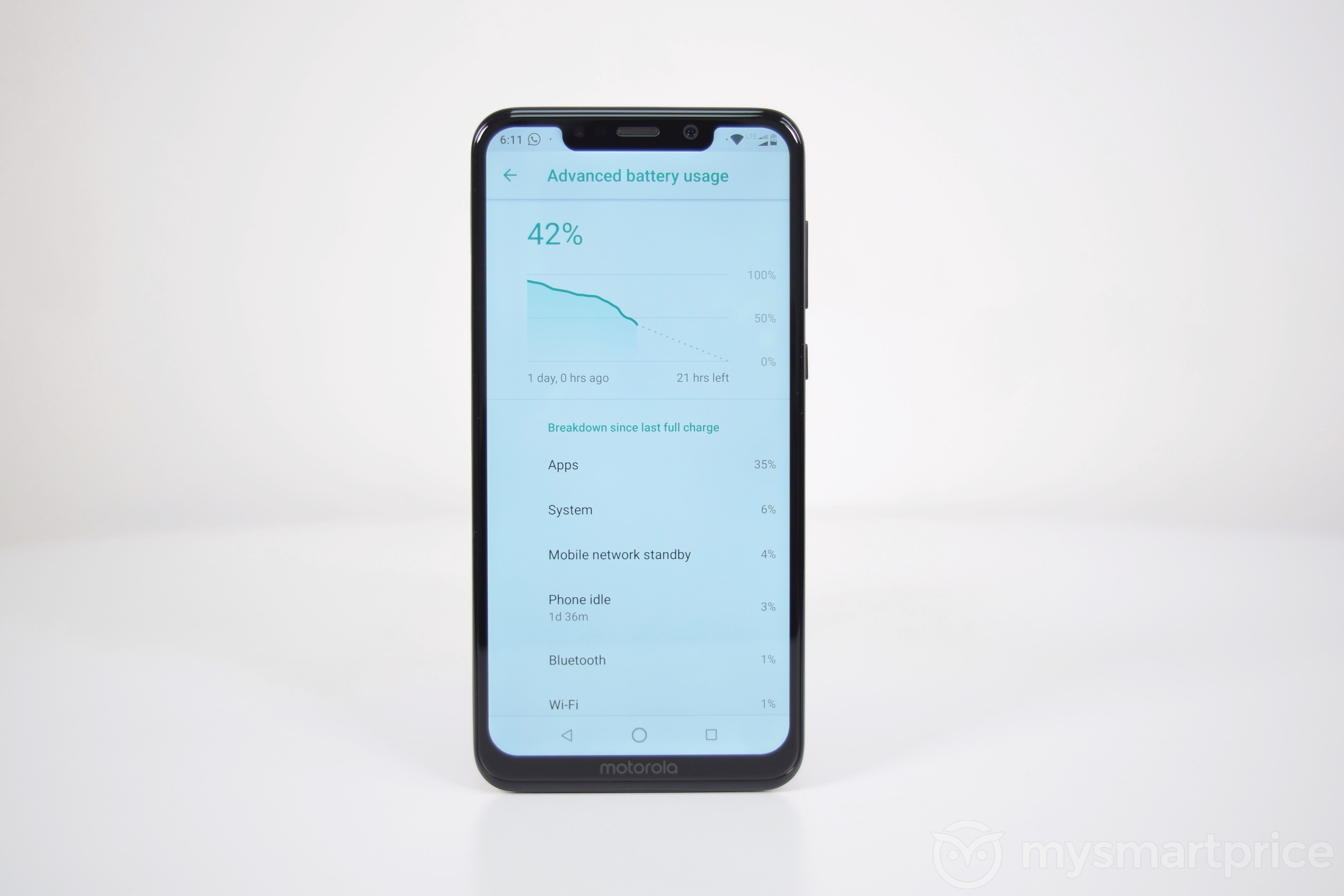
The Motorola One Power’s most touted feature is its massive, 5000mAh battery. We see only a couple of smartphones every year with such high-capacity batteries, and most such smartphones usually lack enough processing power, camera quality, and other such aspects. It is a great deal to see a smartphone with a big battery capacity that also covers other aspects well.
The smartphone supports 15W fast charging, which is not uncommon. What is uncommon however is that the device comes with a fast charger in the box. Motorola is advertising two days of battery backup with the Motorola One Power. After using the device for almost two weeks now, I can say that the brand’s claim stands true.
The Motorola One Power offers a terrific battery life. I usually got around 42 to 48 hours of backup with almost 9 to 10 hours of screen-on time. I haven’t seen any other smartphone that can last as long as the Motorola One Power on a single charge. With the supplied 15W charger, it took just 2 hours to charge a fully drained battery to its 100% capacity. Anyone looking for a smartphone with the best battery life, the Motorola One Power is the phone to get.
Motorola One Power: Verdict
The only thing that concerns me about the Motorola One Power is its primary camera performance – it will not satisfy people with higher expectations. Sure, the display isn’t very bright, and the headphone volume output is low, but these are minor issues that one can live with.
The remaining aspects of the phone, however, are exceptionally well done. The phone has the fastest performance and the longest battery backup among its competitors. It also comes with a cleaner UI and it will receive faster OS updates. It has a solid build quality and great connectivity options. Then there is a brilliant selfie shooter.
I think all these qualities help the One Power in overcoming most of its weaknesses. If I were to choose a phone in the mid-range price category, I would go with the Motorola One Power.
Motorola One Power: Specifications & Features
- Build – Metal body, P2i splash-resistant coating, 156 x 76 x 8.4 mm, 205 grams
- Display – 6.2-inch LTPS IPS LCD, 2246 x 1080 pixels resolution, 18.7:9 aspect ratio, Gorilla Glass protection, Edge-to-edge screen design with a notch
- Primary camera – 16MP+5MP dual-camera; 16MP sensor has f/1.8 aperture and 1.12µm pixel size, 5MP sensor has f/2.2 aperture and 1.0µm pixel size; phase-detection autofocus, dual-tone dual-LED flash, up to 4K video recording at 30FPS
- Front-facing camera – 12MP, f/2.0 aperture, 1.25µm pixel size, LED flash, up to Full HD video recording at 30FPS
- Processor – Qualcomm Snapdragon 636 (8 x 1.8 GHz Kryo 260 CPU cores, and Adreno 509 GPU)
- RAM – 4GB
- Storage – 64GB internal with a microSD card slot supporting up to 256GB expansion
- OS – Android 9 Pie with Android One; to get Android 9 Pie soon
- Connectivity – Dual-SIM (nano-SIM), 4G LTE with VoLTE (only on one card at a time), dual-band Wi-Fi ac/b/g/n, dual-band Wi-Fi hotspot, Wi-Fi direct, Bluetooth v5.0, A-GPS, GPS (with GLONASS, BDS, and GALILEO), FM Radio, USB Type-C port (with OTG support), 3.5mm audio jack
- Sensors – Fingerprint, accelerometer, gyroscope, compass, proximity, ambient light
- Audio – Single bottom-firing loudspeaker, Dolby Audio, two microphones
- Battery – 5000mAh, 15W fast charging support
- Colors – Black
- Price – Rs. 14,999
